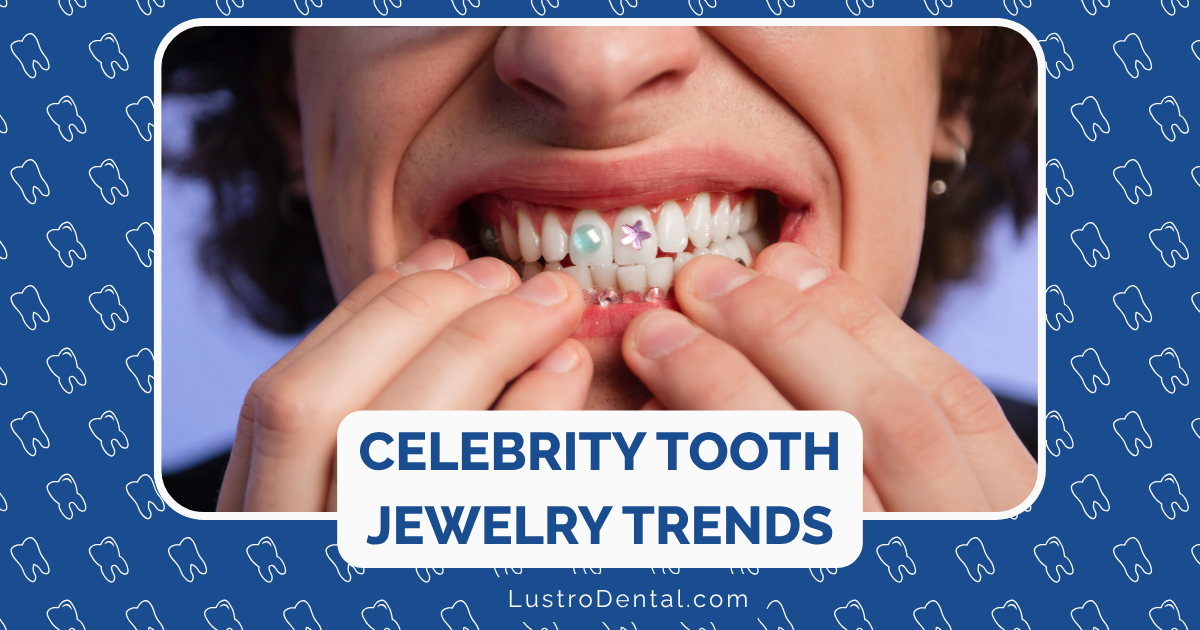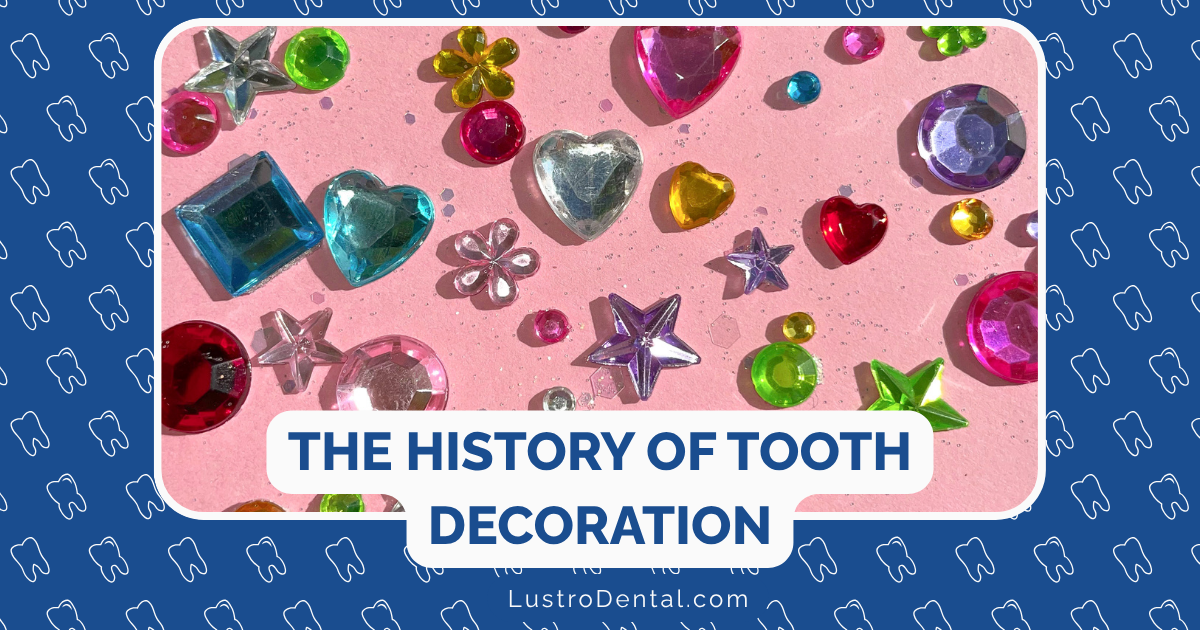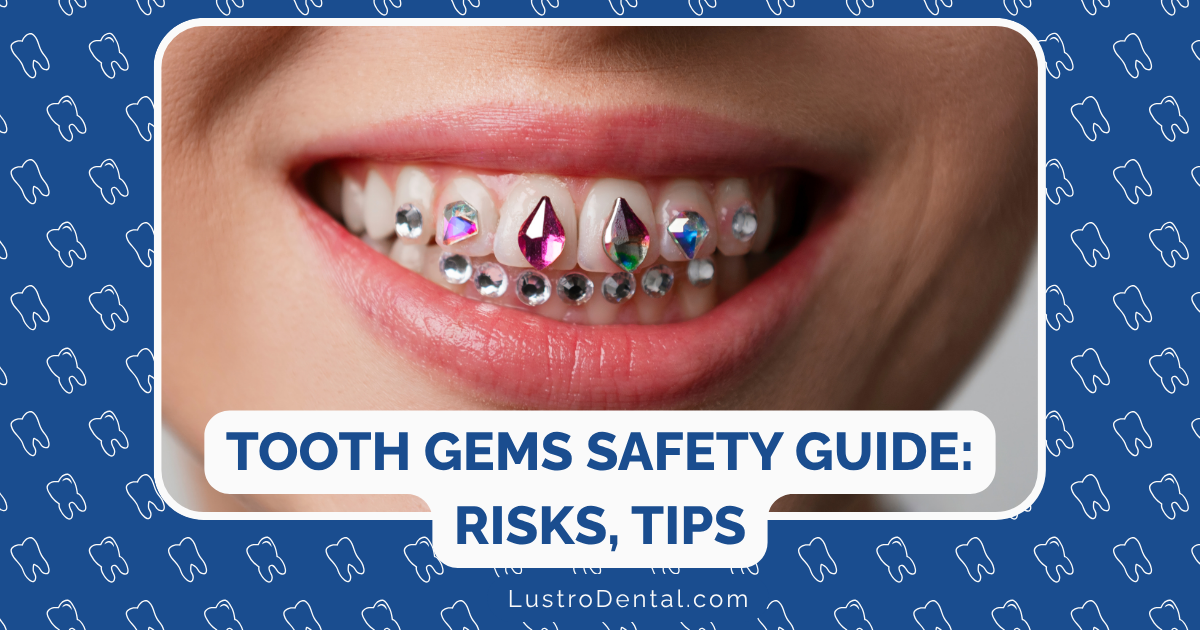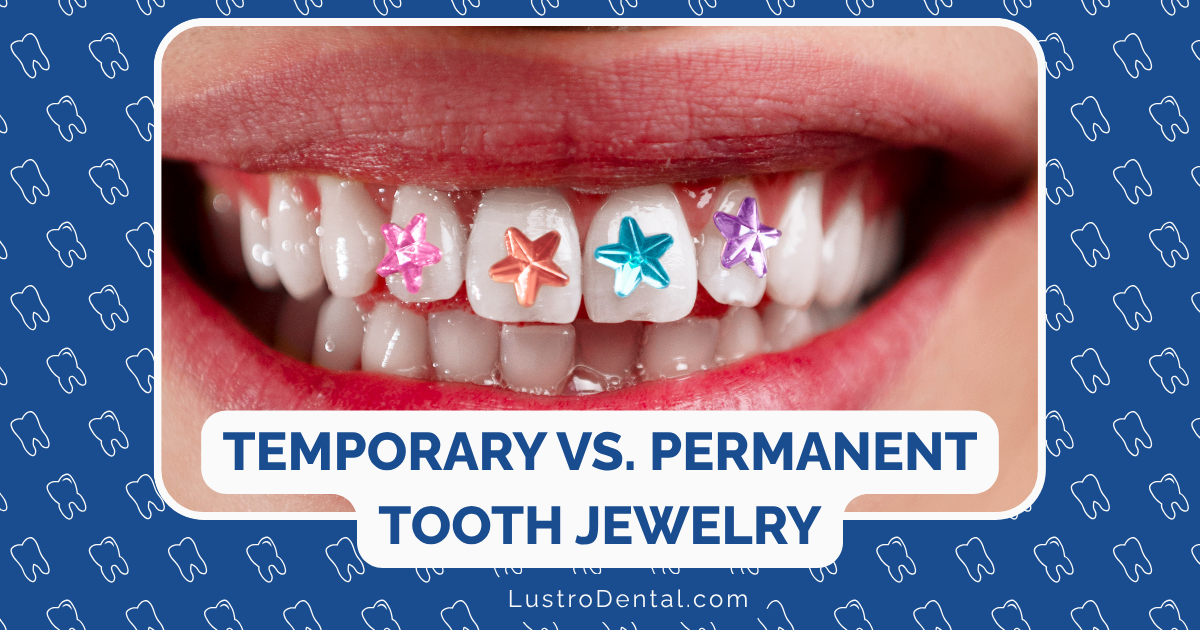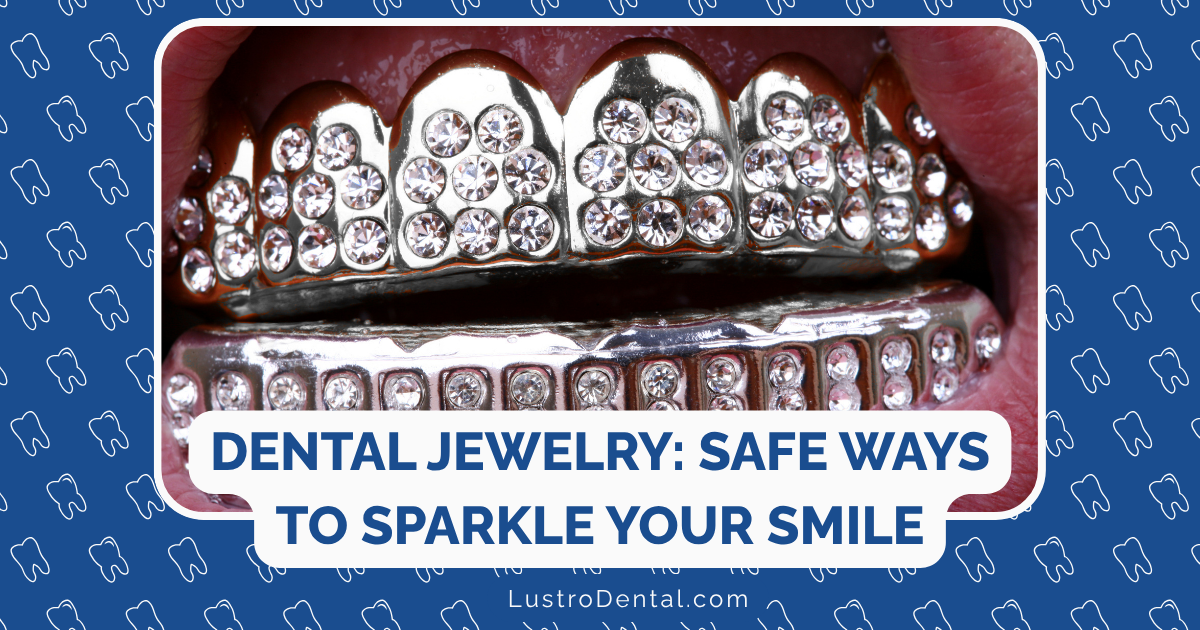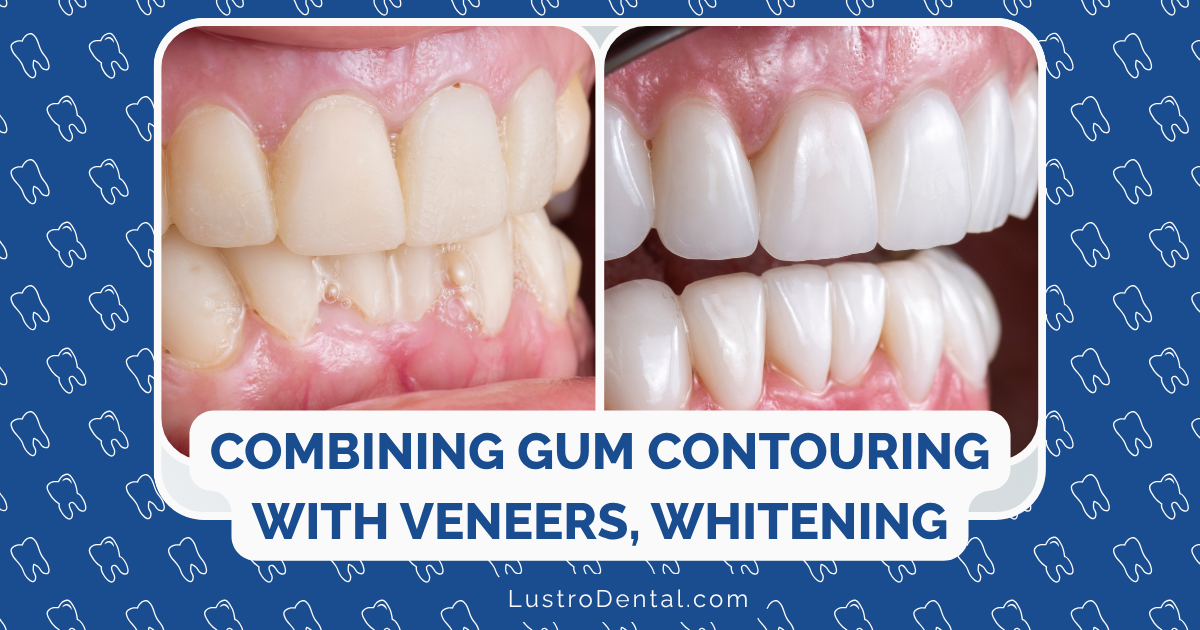Gum Recession vs. Excess Gum Tissue: Different Problems, Different Solutions
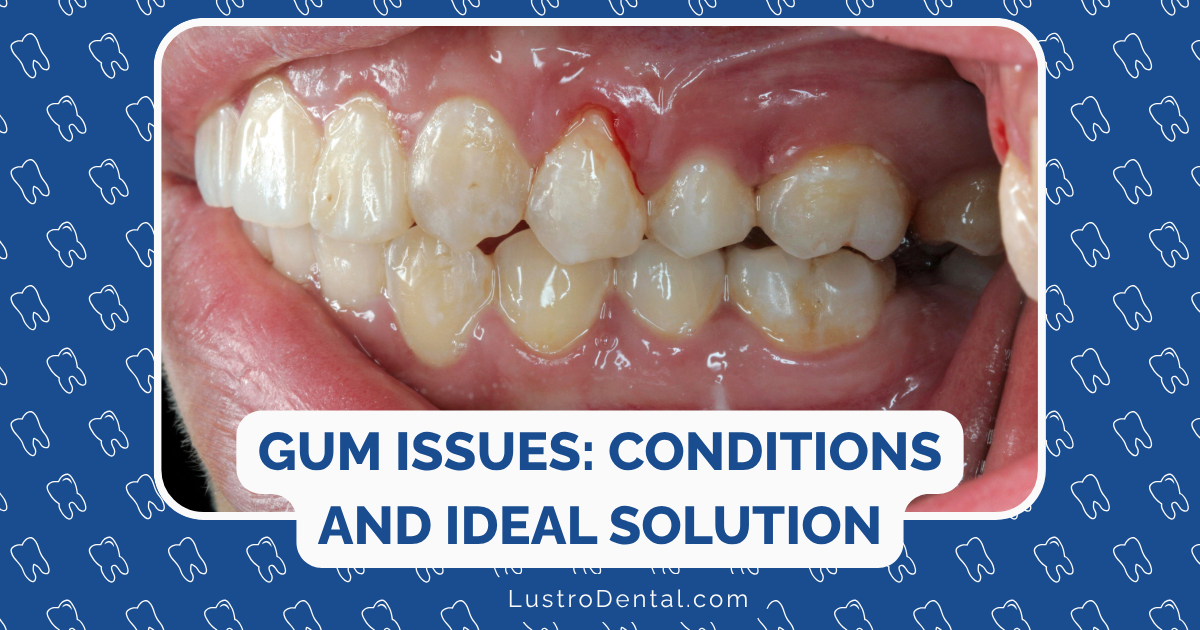
When it comes to gum issues, many people assume that all problems are created equal. However, two of the most common gum concerns—recession and excess tissue—are actually opposite conditions requiring completely different approaches. As a dental health advocate, I’ve seen how confusing these issues can be for patients, often leading to delayed treatment or inappropriate self-care attempts.
Understanding the distinction between these conditions is crucial for proper diagnosis and treatment. Let’s explore the key differences between gum recession and excess gum tissue, and the specific solutions each requires.
Understanding Gum Recession: When Less Is a Problem
What Is Gum Recession?
Gum recession occurs when the gum tissue pulls away from the teeth, exposing more of the tooth structure and sometimes the root surface. This creates a “long tooth” appearance and can lead to significant dental problems if left untreated.
According to the Cleveland Clinic, approximately 88% of people over the age of 65 have gum recession on at least one tooth, making it an extremely common dental concern.
Symptoms of Gum Recession
The signs of gum recession often develop gradually, but may include:
- Exposed tooth roots that appear yellow or brownish
- Increased tooth sensitivity to hot, cold, or sweet foods
- Visible notches at the gum line
- Longer-looking teeth than you had previously
- Black triangles appearing between teeth
- Loose teeth in advanced cases
- Red, swollen gums that may bleed easily
Common Causes of Gum Recession
Several factors can contribute to gum recession:
- Periodontal disease: Bacterial infections that destroy gum tissue and the supporting bone
- Aggressive brushing: Using a hard-bristled toothbrush or applying too much pressure
- Inadequate oral hygiene: Allowing plaque to build up and harden into tartar
- Genetic predisposition: Some people naturally have thinner or more fragile gum tissue
- Hormonal changes: Particularly during pregnancy, puberty, or menopause
- Tobacco use: Smoking or chewing tobacco increases risk of gum disease and recession
- Bruxism (teeth grinding): Excessive force on teeth can lead to gum recession
- Misaligned bite: Uneven pressure on certain teeth can cause gum problems
- Lip or tongue piercings: Jewelry can rub against gums, causing irritation and recession
Treatment Options for Gum Recession
Unlike some dental issues, gum recession cannot be reversed naturally—the tissue won’t grow back on its own. However, several treatment options can address the problem:
1. Scaling and Root Planing
For mild recession caused by periodontal disease, a deep cleaning procedure called scaling and root planing may be recommended. This non-surgical treatment removes plaque and tartar from below the gum line and smooths the root surfaces to promote gum reattachment and prevent further recession.
2. Gum Graft Surgery
For more advanced recession, a gum graft (also called a gingival graft) may be necessary. During this procedure, tissue is taken from another area of your mouth (typically the palate) or from a donor source and surgically attached to the area with recession. According to the American Academy of Periodontology, gum grafting is considered the most predictable and long-lasting treatment for significant gum recession.
Types of gum grafts include:
- Connective tissue grafts: The most common type, where tissue is taken from under a flap cut in the roof of your mouth
- Free gingival grafts: Similar to connective tissue grafts, but tissue is taken directly from the palate
- Pedicle grafts: Using tissue adjacent to the affected tooth rather than from the palate
- Allograft material: Using donor tissue instead of your own
3. Pinhole Surgical Technique
This minimally invasive alternative to traditional gum grafting involves making a small hole in the existing gum tissue, then using special instruments to gently loosen and stretch the gum tissue over the recessed areas.
4. Guided Tissue Regeneration
In cases where bone has been lost, this procedure may be performed alongside gum grafting to encourage both gum tissue and bone regeneration.
Understanding Excess Gum Tissue: When More Is a Problem
What Is Excess Gum Tissue?
On the opposite end of the spectrum is excess gum tissue, often referred to as a “gummy smile.” This condition occurs when too much gum tissue covers the teeth, making them appear short or disproportionate. While not usually a health concern, it can significantly affect smile aesthetics and sometimes impact oral hygiene.
Symptoms of Excess Gum Tissue
The signs of excess gum tissue are generally more immediately noticeable than recession:
- More than 3-4mm of gum tissue visible when smiling
- Teeth that appear short or square
- Disproportionate gum-to-tooth ratio
- Uneven gum line
- Difficulty maintaining oral hygiene in some cases
- Inflammation or redness if excess tissue creates deeper pockets
Common Causes of Excess Gum Tissue
Excess gum tissue can result from several factors:
- Altered passive eruption: When teeth don’t fully emerge from the gums during development
- Hyperactive upper lip: When the upper lip rises too high when smiling, revealing more gum tissue
- Vertical maxillary excess: Overgrowth of the upper jawbone
- Gingival hyperplasia: Enlargement of gum tissue, often due to:
- Medication side effects (particularly anti-seizure drugs, immunosuppressants, and some blood pressure medications)
- Poor oral hygiene
- Hormonal changes
- Genetic conditions
- Compensatory eruption: When teeth continue to erupt to compensate for wear
Treatment Options for Excess Gum Tissue
Unlike gum recession, excess tissue can be effectively addressed with tissue removal procedures:
1. Gingivectomy
A gingivectomy is a surgical procedure that removes and reshapes excess gum tissue. Modern approaches include:
- Traditional scalpel technique: Surgical removal of excess tissue
- Laser gingivectomy: Using laser technology to precisely remove and reshape gum tissue with minimal bleeding and faster healing
- Electrosurgery: Using electrical current to remove tissue
According to a study published in the Journal of Periodontology, laser gingivectomy typically results in less post-operative pain and faster healing compared to traditional methods.
2. Gingivoplasty
While a gingivectomy removes excess tissue, a gingivoplasty focuses on reshaping existing gum tissue to create a more aesthetically pleasing appearance. These procedures are often performed together.
3. Crown Lengthening
This surgical procedure removes both gum tissue and a small amount of bone to expose more of the tooth surface. It’s particularly useful when excess gum tissue is combined with issues like short clinical crowns or when preparing teeth for restorations.
4. Botox Injections
For gummy smiles caused by a hyperactive upper lip rather than excess tissue, Botox injections into the muscles that control lip movement can provide a temporary solution (typically lasting 3-6 months).
5. Orthognathic Surgery
In severe cases where the gummy smile is caused by skeletal issues like vertical maxillary excess, jaw surgery may be recommended, though this is typically reserved for the most pronounced cases.
Prevention and Maintenance: Common Ground
While gum recession and excess tissue require different treatments, the preventive measures share common ground:
For Both Conditions:
- Practice proper oral hygiene: Brush twice daily with a soft-bristled toothbrush using gentle, circular motions
- Floss daily: Remove plaque between teeth before it hardens into tartar
- Schedule regular dental checkups: Early detection allows for less invasive treatment
- Address teeth grinding: Use a night guard if you grind your teeth
- Maintain a healthy diet: Nutrition plays a key role in gum health
- Avoid tobacco: Smoking and chewing tobacco increase risk for gum problems
- Manage chronic conditions: Diseases like diabetes can impact gum health
Specific to Preventing Gum Recession:
- Use proper brushing technique: Brush at a 45-degree angle to the gums using gentle pressure
- Consider an electric toothbrush: Many have pressure sensors to prevent aggressive brushing
- Address misaligned teeth: Orthodontic treatment can help prevent uneven pressure on gums
Specific to Managing Excess Gum Tissue:
- Monitor medication side effects: Discuss alternatives with your doctor if medications are causing gingival hyperplasia
- Maintain meticulous oral hygiene: Especially important if you’re prone to gum overgrowth
Post-Treatment Care
After Gum Graft Surgery:
- Follow a soft food diet for 1-2 weeks
- Avoid brushing the graft site until your dentist advises it’s safe
- Use prescribed mouth rinse instead of brushing the surgical area
- Take medications as prescribed, including pain relievers and antibiotics if recommended
- Apply ice to reduce swelling in the first 24 hours
- Avoid strenuous activity for at least 1 week
After Gingivectomy/Gingivoplasty:
- Follow a soft food diet for several days
- Brush gently around the surgical area using a soft-bristled toothbrush
- Rinse with salt water or prescribed antimicrobial rinse
- Take pain medication as recommended
- Avoid smoking and alcohol for at least 72 hours
- Attend follow-up appointments to ensure proper healing
When to Seek Treatment
For either condition, early intervention typically leads to better outcomes and less invasive treatment options. Consider consulting a dental professional if:
- You notice your teeth looking longer than before
- You experience increased tooth sensitivity
- Your teeth appear unusually short or your smile shows excessive gum tissue
- You see redness, swelling, or bleeding in your gums
- You’re unhappy with the appearance of your gum line
The Importance of Proper Diagnosis
Because gum recession and excess tissue represent opposite conditions requiring different treatments, proper diagnosis is crucial. What might appear to be “short teeth” could actually be excess gum tissue—or it could be normal-sized teeth that appear short due to wear or other factors.
Only a dental professional can determine the true nature of your gum condition through a comprehensive examination that may include:
- Visual assessment of the gum line
- Measurements of pocket depths around teeth
- Evaluation of tooth proportions
- Dental x-rays to assess bone levels
- Examination of your bite and occlusion
Conclusion: Targeted Solutions for Different Problems
Understanding whether you’re dealing with gum recession or excess tissue is the first step toward effective treatment. While both conditions affect the gum line, they require fundamentally different approaches—adding tissue in the case of recession, or removing it in the case of excess.
With proper diagnosis and treatment, both conditions can be effectively managed, restoring both the health and appearance of your smile. If you’re concerned about changes in your gum line or the appearance of your smile, consult with a dental professional who can provide a proper diagnosis and discuss your treatment options.
Remember that gum health is an essential component of overall oral health, and addressing gum issues promptly can prevent more serious dental problems down the road.
Have you experienced gum recession or excess gum tissue? Share your experience or questions in the comments below.
For more information on gum health and treatment options, visit the American Academy of Periodontology or consult with your dental provider.


